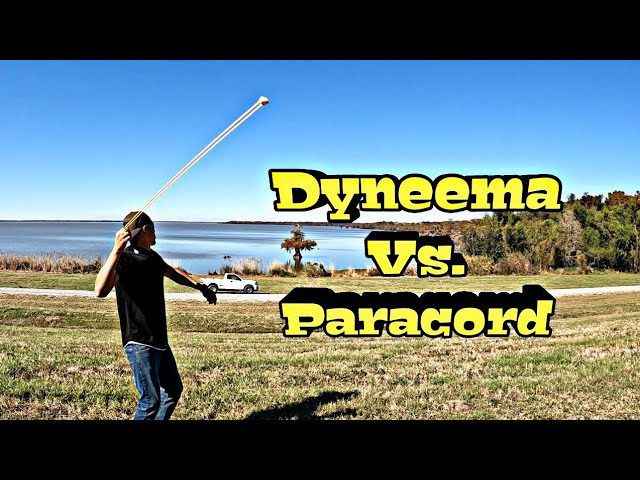Dyneema vs Paracord: Choosing the Best Cordage for Outdoor Adventures
When it comes to outdoor enthusiasts, survivalists, and adventurers, choosing the right cordage can make a significant difference. Among the many cordage options, Dyneema vs paracord is a common debate in the outdoor community. Each has its unique advantages and applications, and in this post, we’ll dive into the characteristics of Dyneema and paracord to help you make an informed decision based on your specific needs.
Dyneema: The High-Tech Wonder Fiber
Dyneema, also known as Spectra or UHMWPE (Ultra High Molecular Weight Polyethylene), is a synthetic fiber renowned for its exceptional strength-to-weight ratio. Pound for pound, Dyneema is stronger than steel, making it the ideal choice for situations where every ounce counts. This lightweight yet incredibly strong material is commonly used in various outdoor gear, including sailing ropes, climbing equipment, and even body armor.
Pros of Dyneema:
Incredible Strength: Dyneema is one of the strongest fibers available, offering unmatched tensile strength, which is essential for outdoor enthusiasts who rely on high-performance gear.
Lightweight: Despite its strength, Dyneema remains exceptionally lightweight, making it perfect for backpackers and ultralight enthusiasts who need to reduce pack weight without sacrificing durability.
Low Stretch: Dyneema has minimal stretch, ensuring that your knots stay tight and secure, which is a critical factor for adventurers needing reliable cordage in extreme conditions.
Cons of Dyneema:
Cost: Dyneema is generally more expensive than paracord, which may be a consideration for budget-conscious adventurers.
Abrasion Resistance: While Dyneema is incredibly strong, it may not be as abrasion-resistant as some other materials, making it less ideal for situations where friction and wear are a concern.
Paracord: The Versatile Classic
Paracord, short for parachute cord, has been a staple in the outdoor community for decades. Originally designed for use in parachutes during World War II, paracord has since evolved into a multi-purpose survival tool. Composed of nylon strands encased in a durable outer sheath, paracord is known for its versatility and affordability.
Pros of Paracord:
- Versatility: Paracord is incredibly versatile, serving a wide range of applications such as a shoelace, clothesline, emergency tourniquet, and more. It’s a go-to cordage for survivalists and outdoor enthusiasts who need a reliable, all-in-one solution.
- Cost-Effective: Paracord is budget-friendly and widely available, making it accessible to a wide range of outdoor adventurers.
- Good Abrasion Resistance: The durable outer sheath of paracord offers solid protection against abrasion, making it suitable for everyday use in rugged environments.
Cons of Paracord:
- Weight: While paracord is not excessively heavy, it is denser than Dyneema, making it less suitable for ultralight backpacking or activities where weight is a critical factor.
- Stretch: Paracord has some stretch, which can affect the stability of knots in certain situations, particularly in critical applications where tightness and security are paramount.
Dyneema vs Paracord for Outdoor Adventures
Choosing between Dyneema and paracord ultimately depends on your specific needs and preferences. If weight reduction and unparalleled strength are your top priorities, Dyneema is the go-to choice. However, if you’re looking for a versatile, affordable option that can serve multiple purposes, paracord remains a reliable and widely used cordage in the outdoor community.
Before making your decision, consider the type of outdoor activities you engage in, your budget, and how much weight you’re willing to carry. For survivalists or backpackers focused on reducing weight without compromising performance, Dyneema may be the better choice. But if versatility, abrasion resistance, and cost-effectiveness are your main concerns, paracord is hard to beat.

